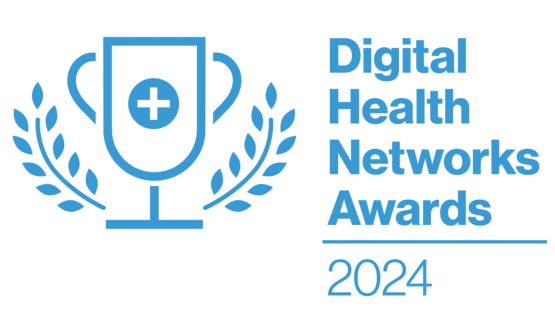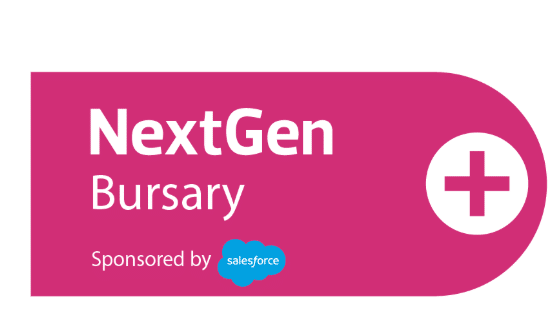Enter the CCG: on what NHS IT can learn from Google
- 5 January 2016

Why do you use Google? Let me guess. Over a decade or so ago, a friend or work colleague casually said: “Let me show you something” and promptly performed the first Google search you’d ever cast eyes upon.
Five seconds later, having picked up your jaw from the floor, you gasped: “Show me that again, slowly…”
Then you went home and tried it for yourself. Next, you told your friends what you’d just discovered – a conversation in which the phrase ‘sliced bread’ featured at least once. After that you used it routinely, ignoring just about every other search engine.
Why did you continue using it? Because it worked – almost certainly more quickly, more intuitively and less stressfully than anything you’d tried before. (Ok, there are just a few occasions when a competing product gets a look-in.)
And now? – You probably do a Google search at least once every working day. Nobody forced you to use it; nobody gave you targets for its use; nobody paid you for utilising it — and, crucially, nobody penalised you if you didn’t use it.
Nor will your exemplary use of Google appear on any digital roadmap, maturity index, RAG rating or league table.
In short, all the usual performance management techniques employed by the NHS haven’t been invoked at all: they haven’t been needed.
Google works so well that it doesn’t need advertising or promoting. You use it because you want to – and you want to use it because you find it easy, convenient, productive, and beneficial.
(Indeed, you may well get cross if one of the other search engines insinuates itself into your desktop and prevents you accessing Google straight away.)
Not just Google…
Exactly the same principle applies, although it’s taken a bit longer to take effect, to the use of word-processors.
Once all hospitals and practices had typewriters – but gradually, gently and without fuss (and without any managerial pressure, either) everyone gradually ditched them in favour of the word-processor, mainly because this made it easier to edit documents – and it had a spell checker.
The same is true in many other areas: PowerPoint presentations, spreadsheets, email… In most cases we don’t need to be pushed into using them: their benefits are obvious.
Now think…
Now compare this with so many of the IT offerings imposed on us by the NHS, both centrally and locally.
Each launch is usually accompanied either by carrots or sticks (usually the latter) in order to encourage us unwilling workers to use the software.
There’s an important principle here which is so self-evident that it hardly needs stating: if newly introduced software really is that good then the users will want to use it and will choose to use it in preference to anything else.
Good software usually doesn’t need promoting after its initial introduction: it is its own best advertisement.
But it’s the obverse of this statement that is most pertinent: if NHS organisations need to strong-arm staff into using a particular piece of software through the use of targets, rewards or penalties, then that of itself is tacit admission that the application isn’t as practical as it’s cracked up to be.
In turn, this should mean that any part of the NHS that is experiencing difficulty implementing specific software needs to have a long hard look both at its quality – and at its effectiveness in allowing ordinary users to do their jobs better.
The ‘badger factor’
So may I suggest a new metric for the Digital Maturity Index? What about introducing ‘the badger factor’- a measure of how much managerial effort has had to be expended in order to dragoon frontline users into engaging with a specific application?
There would be a scoring system: every mailshot, article, promotional event, prominent personality recommendation or Twitter campaign would score three points each; issuing a target (particularly a compulsory, year-on-year incremental one) would be 15 points; sending officials round to cajole and/or bully users or organisations into utilising the software would be 25 points, and so on.
And here’s the rub — any application scoring eight or more should be referred to a suitable regulator as potentially representing a waste of public money and staff time.
Obviously, ‘the badger factor’ is somewhat tongue in cheek! But the idea does demonstrate neatly that the NHS needs constantly to be on the alert to spot those ventures which managers and politicians think are wonderful, but front-line workers don’t.
Think positive
Such an approach could also become very instructive. If, between us, we can identify those pieces of software that the workforce doesn’t regard as helpful, and can work out why this is, then the NHS should be able to change things for the better.
Clearly, some failures will be due purely to the software: perhaps it’s trying to replace another system that already works pretty well.
Alternatively, maybe the input mechanism is clumsy; or else the screens are in the wrong order: too detailed in some places or too simplistic in others. Maybe the whole application is unreliable or slow; or the reporting mechanism isn’t speedy or user-friendly.
Very importantly, it doesn’t have to be the software itself that’s the problem: it may be what is increasingly being referred to as the ‘IT ecosystem’ – in other words, the software doesn’t fit in with the people, the processes or the existing paperwork.
Finally, there is one important situation when user resistance isn’t due to duff software or problems with the ecosystem, and that is where there is an inherent imbalance in the system as a whole. Here the cost and disruption of using the software falls largely on one sector of the health service, while the undoubted benefits (financial, time or convenience) are reaped by a completely different group.
This situation is perhaps the most subtle of the lot in that it can never be rectified by changing the software or making it more user-friendly: the only solution is to recognise that one group of people are consistently losing out and need recompensing appropriately.
Whatever the detailed cause, the bottom line is simple: if the NHS constantly has to badger staff into using a particular piece of software then it is likely that it isn’t yet truly fit for purpose. The solution is obvious – fix the system, not the users.

 |
Dr John LockleyDr John Lockley is clinical lead for informatics at Bedfordshire Clinical Commissioning Group and a part-time GP. |
 |
Digital Health Intelligence and the CCIO Network are running a Clinical Software Usability Survey.
Clinicians across the NHS are being asked to share their views on what is good and bad about the electronic patient record systems that they use; and suppliers are being asked to use the information to they receive to improve them. The survey has already been endorsed by the Royal College of Psychiatrists and leading healthcare IT companies. Please take the survey and encourage your colleagues – even your whole trust – to do the same.




